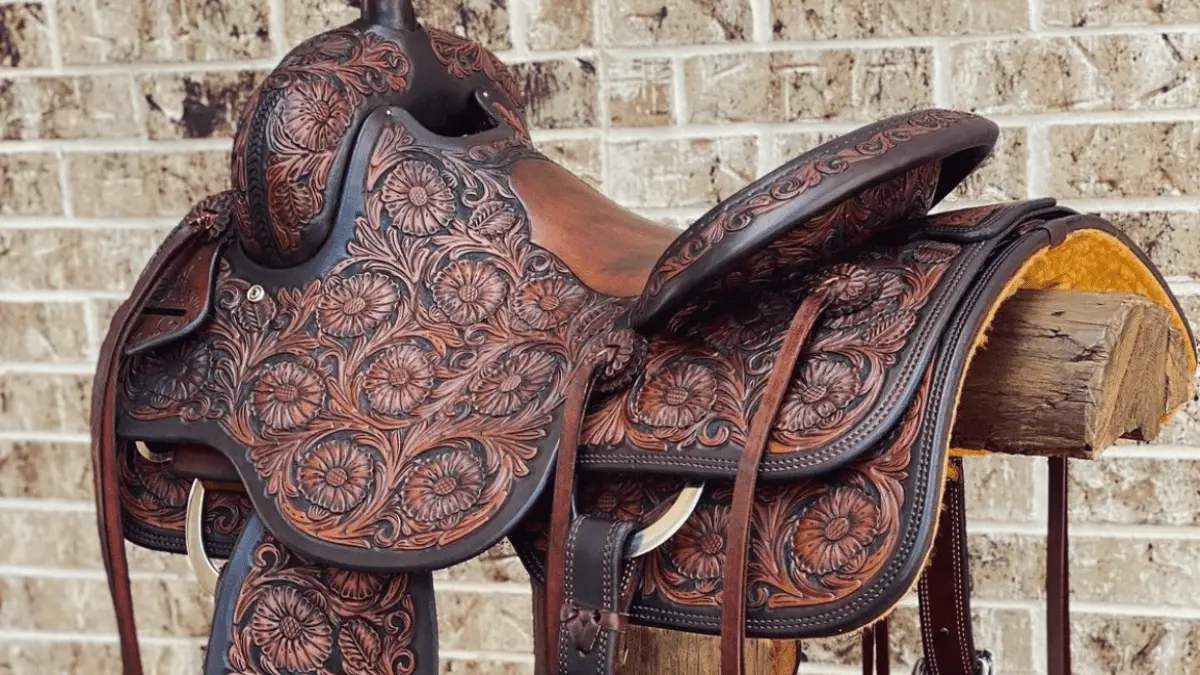The Art of Reining Unveiling the Mastery of Reining Saddles

Reining, a highly specialized discipline in Western riding, demands a harmonious partnership between rider and horse, emphasizing precision, communication, and finesse. Reining saddles, a key component of this equestrian art, are meticulously crafted to facilitate clear cues, maintain rider stability, and promote an intimate connection with the horse. In this comprehensive guide, we will embark on a journey through the world of reining saddles, exploring their vital role in the sport, their intricate anatomy, the various types available, how to select the perfect saddle, and essential care guidelines.
The Poetry of Reining
The Reining Discipline Reining is often regarded as the Western riding equivalent of dressage. It showcases the grace, agility, and responsiveness of the horse and rider partnership. It is characterized by intricate patterns and maneuvers, including spins, sliding stops, rollbacks, and more. Success in reining depends on the seamless communication between rider and horse.
The Significance of Reining Saddles Reining saddles are not just equipment; they are instrumental in the reining experience. These saddles are thoughtfully designed to enable riders to deliver precise cues, maintain balanced positions, and foster an intimate connection with their horses. Let’s explore the anatomy of reining saddles.
Anatomy of Reining Saddles
Understanding the core components of reining saddles is vital for selecting the ideal one:
Saddle Tree The saddle tree serves as the foundational structure of the reining saddle, providing stability and support. It is meticulously designed to promote close contact between the rider and the horse, ensuring accurate and precise communication.
Seat Reining saddles feature a deep and comfortable seat that provides security and balance for the rider. The deep seat enables riders to maintain stability during the execution of complex maneuvers and provides a solid platform for delivering cues.
Skirt The skirt of a reining saddle is typically short and rounded to maximize contact between the rider’s leg and the horse. This design facilitates subtle cues and enhances the rider’s stability while performing reining patterns.
Fenders and Stirrups Reining saddles are equipped with fenders and stirrups that allow the rider’s legs to hang freely. This design enables the rider to execute precise cues with minimal effort and maintain intimate contact with the horse.
Rigging Reining saddles often feature in-skirt rigging, which enhances the rider’s proximity to the horse. This rigging style ensures that the saddle remains secure and stable during the execution of intricate reining maneuvers.
Styles of Reining Saddles
Reining saddles come in various styles to cater to different riding preferences:
Traditional Reining Saddle Traditional reining saddles are known for their simple and functional design. They prioritize straightforward communication between rider and horse, making them ideal for training and working purposes.
Show Reining Saddle Show reining saddles are designed with intricate tooling, decorative features, and often, silver accents. They are commonly used in reining competitions, adding a touch of style to the rider’s performance.
Choosing the Perfect Reining Saddle
Consider Your Riding Style Selecting the right reining saddle should align with your riding style and goals. Traditional reining saddles are excellent for training and work, while show reining saddles add a stylish touch for competitive events.
Evaluate Saddle Fit Proper saddle fit for both the horse and the rider is paramount. The saddle tree should match the horse’s back shape, and the saddle should provide a comfortable, balanced seat for the rider.
Material and Quality Investing in a high-quality reining saddle crafted from durable materials is essential. The quality of craftsmanship and the materials used significantly affect the saddle’s performance and longevity.
Tooling and Design Consider the tooling and design of the saddle. Traditional reining saddles maintain a straightforward appearance, while show reining saddles feature more decorative elements. Your choice should reflect your riding style and preferences.
Caring for Your Reining Saddle
Proper saddle care is crucial to maintain its performance and appearance. Regular cleaning, conditioning, and storage in a cool, dry place will ensure that your reining saddle continues to serve you and your horse effectively for years to come.
Conclusion
Reining saddles are not just riding equipment; they are crucial partners in the art of reining. Whether you are a dedicated reining enthusiast, a skilled trainer, or a competitive equestrian, the perfect reining saddle is your key to success in this precision-driven discipline. Choose your saddle thoughtfully and embark on your reining journey with confidence, knowing you have the finest equipment to support your pursuit of excellence in the thrilling world of reining.
